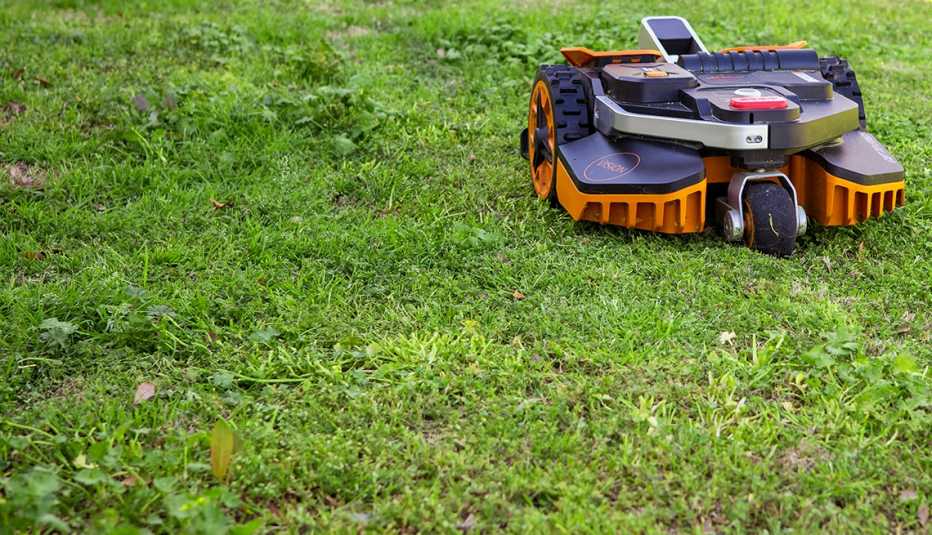AARP Hearing Center


Oh, the dread of summer Saturdays.
Here in steamy South Carolina, no matter how early I endeavor to cut the grass, a sweaty mess is the inevitable result. Not to mention, this chore only gets tougher as the years pass. I’ve come to the opinion that life’s too short to spend it pushing a loud, noxious machine up and down my little tract of land. If only I could sit back and let the mower do all the work.
I can? Wait, what?
For nearly two decades, many American households have used robots to vacuum — and in some cases, mop — the floors. But only now are self-guided lawn mowers emerging as the “it” tech tool to ease wear and tear on our bones and joints. Bonus: Because a robot doesn’t get tired — as I do — it takes a pass across the plot daily, keeping the mass of green a uniform length and keeping the homeowners association off my back over overgrown blades.
Meet Larry. That’s the name I gave the lawnbot I bought. (This one is manufactured by Worx; other popular manufacturers are Greenworks, Husqvarna and Gardena.) Working with Larry is a bit different from doing this job myself. First off, of course: I don’t have to do the job myself. Nor do I have to pay a neighbor kid to come over and perform mediocre work. Larry chugs along while I take a load off. Second, he’s remarkably quiet. We’ve all been annoyed by the roar of a traditional mower waking us up early on a weekend morning. Now, I’m the good neighbor. Larry can go about his business anytime — day or night — without disturbing the rest of the street.


What of the dangers? Cleaning floors is one thing, but a robot wielding sharp blades? Are we inviting doom? The short answer is no. If someone passes by and is foolish enough to pick up the mower in operation, it instantly shuts down. Should someone seek to abscond with the device, it locks up and won’t start again until the proper passcode is entered.
It’s important to note that there are two types of robot mowers: those that operate within a boundary wire and those that don’t require a physical pen. It’s probably best to avoid boundary-wire models. The idea was to ensure that the mower wouldn’t move past a designated area. But it takes hours to set up the perimeter, and the wire will inevitably get damaged at some point, requiring you to locate the problem and splice the wire back together. Most manufacturers are moving away from using boundary wire in newer models, as advanced technology allows your yard to be mapped without it. Smartphone apps allow for proper device management.

































































You Might Also Like
Boost Your Home’s Curb Appeal
Our AARP Smart Guide offers high-impact tips to add allure to your abode, from walkway to windows
Grow Your Own Outdoor Oasis
From beautifying on a budget to space saving vertical gardens, we have tips for a landscape you’ll love
Your Ultimate Guide to Mulching
Why mulching is a must, which kind to use and where and how to do it (yes, there are mulching rules)
AARP Members Edition
Your daily source for candid takes on life, comprehensive guides to living well, tips for saving money, inspiring travel, and more – only for AARP membersRecommended for You